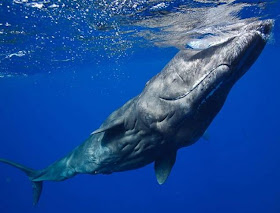

Changes in density likely enhance echolocation. The proportion of wax esters retained by an average (living) whale head appears to reflect buoyancy influenced by heat. Simple triglycerides are seen as well.Ī botanical alternative to spermaceti is a derivative of jojoba oil, jojoba esters, C 19H 41COO-C 20H 41, a solid wax which is chemically and physically very similar to spermaceti and may be used in many of the same applications.Ĭurrently there is disagreement on what biological purpose or purposes spermaceti serves. Spermaceti consists principally of cetyl palmitate (the ester of cetyl alcohol and palmitic acid), C 15H 31COO-C 16H 33. Spermaceti is insoluble in water, very slightly soluble in cold ethanol, but easily dissolved in ether, chloroform, carbon disulfide, and boiling ethanol. The speed of sound in spermaceti is 2,684 m/s (at 40 kHz, 36 ☌), making it nearly twice as good a conductor of sounds as the oil in a dolphin's melon. When it cools to 30 ☌ or below, the waxes begin to solidify. The blubber oil of the whale is about 66% wax. Unlike other toothed whales, most of the carbon chains in the wax esters are relatively long (C 10–C 22). It is composed mostly of wax esters (chiefly cetyl palmitate) and a smaller proportion of triglycerides. Raw spermaceti is liquid within the head of the sperm whale, and is said to have a smell similar to raw milk. Spermaceti is taken from the spermaceti organ (yellow) and junk (orange) within the sperm whale's head. The substance is also the origin of the name of the sperm whale.

The substance was initially believed to be whale semen, due to its appearance when fresh. Spermaceti is derived from Medieval Latin sperma ceti, meaning "whale sperm" (from Latin sperma meaning " semen" or "seed", and ceti, the genitive form of "whale"). Candlepower, a photometric unit defined in the United Kingdom Act of Parliament Metropolitan Gas Act 1860 and adopted at the International Electrotechnical Conference of 1883, was based on the light produced by a pure spermaceti candle. The light produced by a single pure spermaceti source (candle) became the standard measurement of "candlepower" for another century. Cetaceous lamp oil was a commodity that created many maritime fortunes. The crews seeking spermaceti routinely left on three-year tours on several oceans. The whaling industry in the 17th and 18th centuries was developed to find, harvest and refine the contents of the head of a sperm whale. The substance was also used in making candles of a standard photometric value, in the dressing of fabrics, and as a pharmaceutical excipient, especially in cerates and ointments. Spermaceti forms brilliant white crystals that are hard but oily to the touch, and are devoid of taste or smell, making it very useful as an ingredient in cosmetics, leatherworking, and lubricants. Spermaceti wax is extracted from sperm oil by crystallisation at 6 ☌ (43 ☏), when treated by pressure and a chemical solution of caustic alkali. The proportion of wax esters in the spermaceti organ increases with the age of the whale: 38–51% in calves, 58–87% in adult females, and 71–94% in adult males. Measurement of the proportion of wax esters retained by a harvested sperm whale accurately described the age and future life expectancy of a given individual. This claim has been called into question by recent research which indicates a lack of biological structures to support this heat exchange, as well as the fact that the change in density is too small to be meaningful until the organ grows to huge size. The buoyancy theory holds that the sperm whale is capable of heating the spermaceti, lowering its density and thus allowing the whale to float in order for the whale to sink again, it must take water into its blowhole which cools the spermaceti into a denser solid. There has been concrete evidence to support both theories. Theories for the spermaceti organ's biological function suggest that it may control buoyancy, may act as a focusing apparatus for the whale's sense of echolocation, or possibly both. It has been extracted by whalers since the 17th century for human use in cosmetics, textiles, and candles. This organ may contain as much as 1,900 litres (500 US gal) of spermaceti. Spermaceti is created in the spermaceti organ inside the whale's head. Spermaceti is a waxy substance found in the head cavities of the sperm whale (and, in smaller quantities, in the oils of other whales). Left to right: A sample of solid raw spermaceti, a spermaceti wax candle and a bottle of sperm oil.


 0 kommentar(er)
0 kommentar(er)
